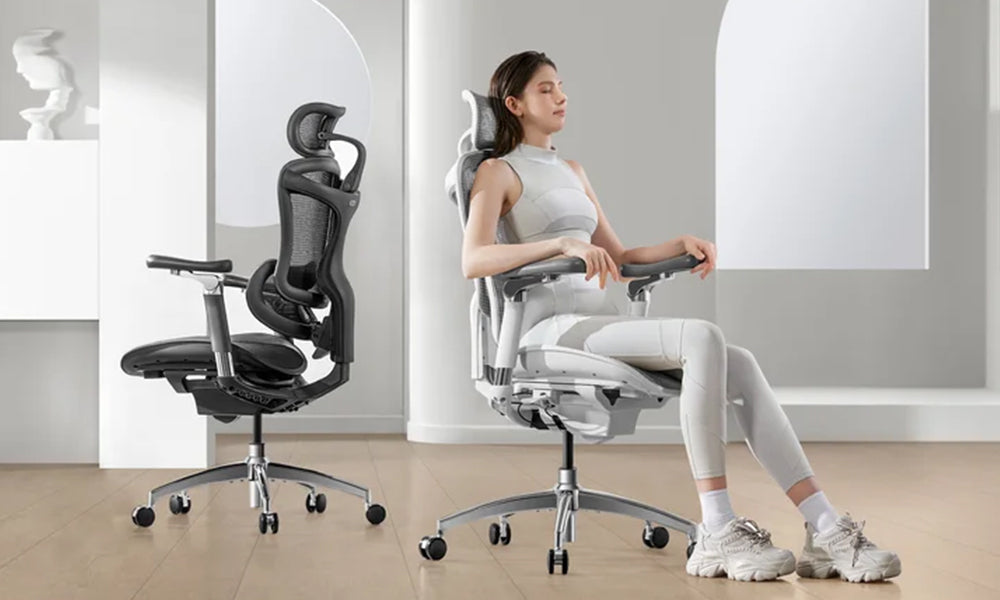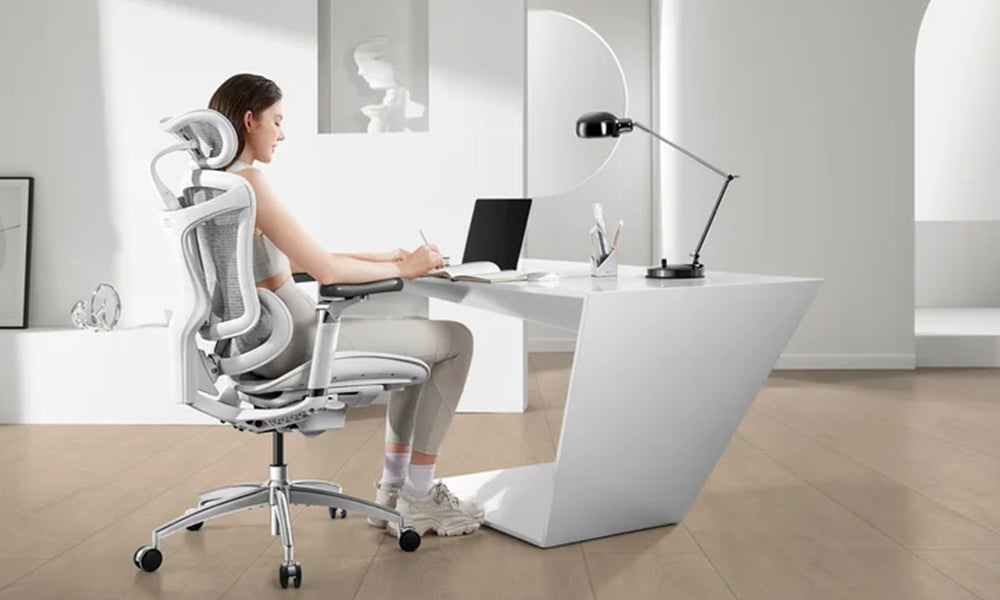The rise of remote work has transformed the way we approach our careers. While the flexibility of a home office is undeniable, it presents a new set of challenges. One of the most crucial aspects to consider is ergonomics – the science of designing the workplace to fit the worker. An ergonomic home office minimizes discomfort and prevents injuries associated with prolonged computer use.
This comprehensive guide will equip you with the knowledge and tools to create a home office that prioritizes both comfort and productivity.
The Importance of Ergonomics in Your Home Office
Working from home often leads to long hours spent hunched over laptops on kitchen counters or makeshift desks. This can cause a variety of musculoskeletal issues, including neck and back pain, carpal tunnel syndrome, and eye strain.
Ergonomics aims to create a workspace that fosters good posture and reduces strain on your body. Proper positioning of your chair, monitor, keyboard, and mouse promotes natural alignment, minimizing the risk of injury and maximizing your comfort throughout the workday.
Beyond physical well-being, an ergonomically designed home office can significantly improve your mental state and productivity. Reduced discomfort translates to increased focus and concentration, allowing you to work more efficiently and avoid fatigue.
Assessing Your Space: Choosing the Right Location
The first step to setting up your home office is identifying a suitable location. Ideally, your workspace should be a dedicated area with minimal distractions and sufficient space to accommodate your work setup. Here are some key factors to consider:
- Lighting: Natural light is optimal for your eyes. If this isn't readily available, choose a well-lit area with adjustable lighting fixtures. Avoid glare on your computer screen.
- Temperature: Aim for a comfortable room temperature.
- Noise: Select a quiet space away from noise sources like washing machines or busy streets.
- Separate Space: Having a dedicated workspace encourages a healthy work-life balance. It allows you to mentally switch off from work at the end of the day.
Tips for Limited Space:
- Folding Desks: Consider a space-saving folding desk that can be tucked away when not in use.
- Room Dividers: Utilize room dividers to create a designated workspace.
- Standing Desks: If space is truly limited, a standing desk with a laptop stand can be a good option.
- Choosing Your Furniture: Chairs and Desks
The cornerstone of an ergonomic home office is furniture that supports proper posture. Here's what to look for:
Chairs:
- Adjustable Height: The chair should allow you to adjust the seat height so your feet rest flat on the floor with your knees bent at a 90-degree angle.
- Lumbar Support: Choose a chair with built-in lumbar support to maintain the natural curve of your spine.
- Armrests: Adjustable armrests should support your elbows at a comfortable height, keeping your shoulders relaxed.
- Material: Breathable mesh or fabric is preferable to leather or vinyl for comfort, especially in warmer climates.
Desks:
- Adjustable Height (Optional): Ideally, your desk should be adjustable to accommodate sitting or standing positions. If not, choose a desk height that allows your elbows to rest at a 90-degree angle while seated.
- Surface Area: Ensure the desk offers sufficient space for your computer, monitor, keyboard, mouse, and any additional equipment you use regularly.
- Sturdiness: Choose a stable desk that won't wobble or shake when you work.
Additional Considerations:
- Footrest: If your chair doesn't allow for your feet to rest flat on the floor, consider a footrest to maintain proper leg alignment.
- Anti-fatigue Mat: Standing desks can benefit from an anti-fatigue mat to provide comfort and reduce pressure on your feet and legs.
Cost-Effective Tips:
Look for ergonomic furniture on sale or second-hand.
Invest in an ergonomic chair first, it can be used with a variety of desks.
Consider using lumbar support cushions and adjustable keyboard trays on existing desks.
Positioning Your Equipment: Monitors, Keyboards, and Mice
Positioning your computer equipment plays a crucial role in maintaining good posture and reducing strain on your eyes, wrists, and neck. Here's a breakdown of optimal positioning:
Monitors:
Height: The top of your monitor should be at eye level or slightly below.
Distance: Position your monitor an arm's length away from your eyes (approximately 20 to 28 inches).
Angle: Tilt the monitor slightly backward for optimal viewing.
Keyboards:
Height: Your elbows should be bent at a 90-degree angle when typing. Adjust the keyboard height accordingly.
Positioning: Place the keyboard directly in front of you, not off to one side.
Wrist Support: Consider using a wrist rest to maintain a neutral wrist position and reduce strain.
Mice:
Location: Position the mouse close to your keyboard to avoid excessive arm reaching.
Grip: Use a neutral grip, keeping your wrist straight and avoiding bending it up or down.
Mouse Pad: Use a comfortable mouse pad with adequate surface area for smooth movement.
Additional Tips:
Adjust Font Size: Increase the font size on your screen to reduce eye strain.
Take Breaks: Get up and move around every 30-60 minutes to prevent muscle fatigue.
Stretch Regularly: Incorporate simple stretches into your workday to improve flexibility and reduce tension.
Personalizing Your Workspace
A comfortable and inviting workspace can boost your mood and enhance productivity. Here are some ways to personalize your home office:
Add Plants: Plants bring life and color to your space, and they can also improve air quality.
Incorporate Natural Materials: Wood, stone, and other natural materials can create a calming and relaxing atmosphere.
Choose Comfortable Lighting: Use ambient lighting for overall illumination and task lighting for specific work areas.
Display Personal Items: Decorate with photos, artwork, or other items that inspire you.
Making Adjustments and Seeking Professional Advice
As you work in your new ergonomic home office, pay attention to your body's signals. If you experience discomfort, make adjustments to your furniture and equipment positioning.
If you have persistent pain or concerns about your posture, consider consulting an ergonomist or occupational therapist. They can provide personalized assessments and recommendations to optimize your workspace for your specific needs.
Conclusion
Creating an ergonomic home office is an investment in your health, well-being, and productivity. By following these guidelines and personalizing your workspace, you can transform your home into a haven of comfort, focus, and efficiency. Remember, small adjustments can make a big difference in preventing injuries and promoting long-term health.



